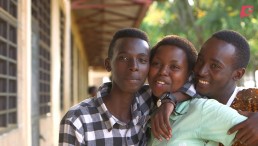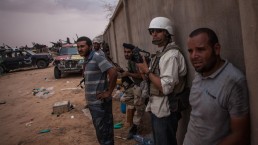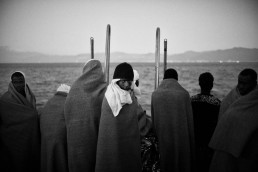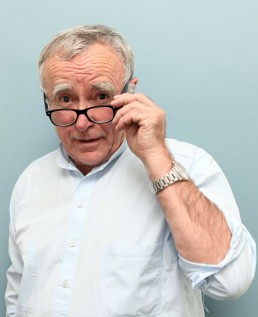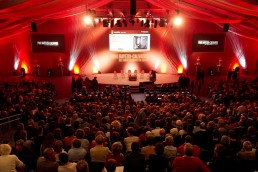[Audio] The African Great Lakes
In the wake of the Rwandan genocide, the turmoil which shakes the Great Lakes region of Africa involves 9 countries.

This war that has been going on for over 18 years is the result of various factors: the weakness of the Congo State, the Army of Rwanda, old colonial frontiers, poverty lead by ethnic tensions, natural resources, overpopulation of the Great Lake region, the militarization of the informal economy, the world’s demand for natural resources, the instability in Burundi and the helplessness of the United Nation.
The toll is heavy: in twenty year, 6 million people are dead, some 4 millions have fled their countries, refugee camps are saturated and hundreds of thousands are now impoverished. The populations do not succumb to the bombs. They die of diseases and hunger. Rapes and destruction of social fabrics have become the new weapons of war.
Violence is now monetized.
How do we explain the mutism of the international community? How come a toll of 6 million dead does not cause a collective outrage? How come current affairs deliberately omit this tragedy that is happening right under our noses when international correspondent relentlessly work to shed the light on this catastrophe?
Followed by a reception prepared and animated by Eric Valmir (France Inter), Jean-Philippe Rémy (Le Monde) and Justine Brabant..
Crédit photo : Matej Leskovsek
[Audio] Jim: The James Foley Story
On Thanksgiving Day 2012, American photojournalist James "Jim" Foley was kidnapped in Syria, two years before the infamous video of his public execution introduced much of the world to ISIS.

JIM: THE JAMES FOLEY STORY, directed by close childhood friend Brian Oakes, tells the story of Jim’s life through intimate interviews with his family, friends and fellow journalists – while former hostages reveal never-before-heard details of his captivity with a chilling intimacy that reveals their courageous untold story of perseverance.
Made with unparalleled access (including footage Foley shot himself), and using carefully rendered recreations, Oakes takes viewers deep into the darkness and valor of Jim’s captivity. What emerges is a powerful chronicle of bravery, compassion and pain at the dawn of America’s war with ISIS.
With Nicole Tung and Didier Francois
Credit photo : Matej Leskovsek
23rd edition of the Bayeux-Calvados Award : results
Fifty war correspondents have gathered in Bayeux on October 7th and 8th to debate and award trophies in the following categories: photo, print, radio, television, grand format television, young reporter (photo), web journalism and video image. Three honorary awards have been attributed: the Regional prize for students and trainees of Normandy (television), the Public’s Choice award (photo) and the Ouest-France – Jean Marin prize (print). Presided by Jean-Claude Guillebaud, the international jury of the 23rd edition of the Bayeux-Calvados Award for war correspondents has reached its verdict…
“Since I was part of the jury that selected this year’s nominees, I was aware that the choice of the international jury would be a particularly difficult one in the light of the quality of the articles and reports in competition. The final result is absolutely astounding. I am all the more appreciative of this award given that it rewards war correspondents of all media. The Bayeux-Calvados Award for war correspondents offers a panoramic view of our profession. And this is what makes this award so unique and precious.”
Jean-Claude Guillebaud
PHOTO TROPHY – INTERNATIONAL JURY
AWARDED BY NIKON
1st Prize
annis BEHRAKIS
REUTERS
Les persécutés
GREECE
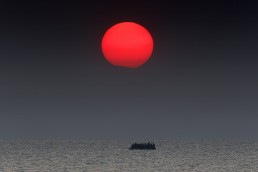
As the sun rises a dinghy overcrowded with Syrian refugees drifts in the Aegean sea between Turkey and Greece after its motor broke down while traveling from the Turkish coast to the Greek island of Kos, August 11, 2015. A Greek coast guard responded to distress signals and arrived at the scene to help.
2nd Prize
Hassan GHAEDI
SIPA
Guerre en Irak : opération Al-Bashir
IRAQ
3rd Prize
Abd DOUMANY
AFP
Hôpital de fortune à Douma
SYRIA
TELEVISION TROPHY – INTERNATIONAL JURY AWARDED BY AMNESTY INTERNATIONAL
1st Prize
Arnaud COMTE and Stéphane GUILLEMOT
FRANCE 2
Mossoul : fuir à tout prix
IRAQ
2nd Prize
Clarissa WARD and Bilal Abdul KAREEM
CNN
Témoin d’une frappe aérienne
SYRIA
3e Prix
Alex CRAWFORD and Garwen MCLUCKIE
SKY NEWS
De la Turquie à la Grèce
TURKEY – GREECE
PHOTO TROPHY – PUBLIC’S CHOICE AWARD
SPONSORED BY THE FRENCH DEVELOPMENT AGENCY (AFD)
1st Prize
Yannis BEHRAKIS
REUTERS
Les persécutés
GREECE

As the sun rises a dinghy overcrowded with Syrian refugees drifts in the Aegean sea between Turkey and Greece after its motor broke down while traveling from the Turkish coast to the Greek island of Kos, August 11, 2015. A Greek coast guard responded to distress signals and arrived at the scene to help.
TELEVISION TROPHY – REGIONAL PRIZE FOR STUDENTS AND TRAINEES OF NORMANDY
1st Prize
Virginie NGUYEN HOANG and Dastane ALTAÏR
PAC PRESSE for FRANCE 4
War is a bitch
UKRAINE
WEB JOURNALISM TROPHY – INTERNATIONAL JURY
AWARDED BY NIKON
1st Prize
Guillaume HERBAUT and Paul OUAZAN
ARTE
Ukraine : carnet de route d’un photographe
UKRAINE
PRINT TROPHY – INTERNATIONAL JURY
AWARDED BY THE DEPARTMENT OF CALVADOS
1st Prize
Wolfgang BAUER
DIE ZEIT
“I’ve become someone else. Someone I no longer recognize”
NIGERIA
2nd Prize
Tristan MCCONNELL
FOREIGN POLICY
Fermer les yeux et faire semblant d’être morts
KENYA
3rd Prize
Anthony LOYD
THE TIMES
Reports on the fight against Islamic State
IRAQ – SYRIA – AFGHANISTAN
RADIO TROPHY – INTERNATIONAL JURY
AWARDED BY THE D-DAY LANDING COMMITTEE
1st Prize
Jeremy BOWEN
BBC NEWS
Yemen
YEMEN
2nd Prize
Hugh SYKES
BBC NEWS
Tunisia’s anti-isis rappers
TUNISIA
3rd Prize
Omar OUAHMANE
FRANCE INTER
12 jours dans la vie d’un réfugié
TURKEY – GREECE – MACEDONIA – SERBIA – CROATIA – HUNGARY – AUSTRIA
YOUNG REPORTER TROPHY (PHOTO) – INTERNATIONAL JURY
SPONSORED BY CAPA PRESSE TV
1st Prize
Mohammed BADRA
EPA
La Syrie, ceux qui restent
SYRIA
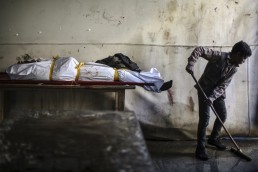
A Syrian boy mops the floor of a morgue next to a man who died in an airstrikes carried out by forces loyal to the Syrian government in the rebel-held area of Douma, outskirts of Damascus, Syria, 04 December 2015. Douma has been consistently attacked throughout the nearly five year Syrian civil war, leading to the deaths of scores of civilians.
GRAND FORMAT TELEVISION TROPHY – INTERNATIONAL JURY
AWARDED BY SCAM
1st Prize
Ayman OGHANNA and Warzer JAFF
VICE
Road to Fallujah
IRAQ
VIDEO IMAGE TROPHY – INTERNATIONAL JURY
SPONSORED BY GALAXIE / FRANCE 24 / ARTE
1st Prize
Roméo LANGLOIS
FRANCE 24
À l’assaut du “califat”
SYRIA
PRINT TROPHY – OUEST-FRANCE – JEAN MARIN
1st Prize
Célia MERCIER
XXI
Passeurs de vie
IRAQ
Refugees across Europe

Collective exhibitions of AFP photojournalists
Since the summer of 2015, Europe is facing an unprecedented flood of migrants. Waves of refugees, mainly from Syria, Iraq, but also from the Horne of Africa, Afghanistan and Pakistan, arrive at the doors of Europe with the hope of finding a better life.
According to The United Nations more than a million of refugees have reached the European Union in 2015 and some 260.000 during the first six months of the year 2016 alone.
The AFP follows the journey of migrants through Europe from June 2015 to July 2016. The geographical localization of these images enables the visitor to follow their path across the continent.
The visitor can also browse through multimedia content, displayed as flashcodes and accessible via smartphones.
Outside in Bayeux.
The layout of the exhibition can be found in details at the Office of Tourism and here
Crédit :
This exhibition was created in association with the AFD, the UNHCR and Nikon.



Gaza, the aftermath

From July 2014 to February 2016, the Belgian photojournalist Virginie Nguyen Hoang went to Gaza five times.
She was there during the Summer 2014 War and decided to return to Gaza in order to relate the reconstruction of Gaza through the daily life of four families.
The conflict between the Israeli army and forces of Hamas and the Islamic Jihad in Gaza were responsible for 2.502 Palestinian deaths and 71 for Israel, including 66 soldiers. Among the Palestinian victims, 1.583 were civilians, 521 children and 283 women (According to the Office for the Coordination of Humanitarian Affairs).
Since the cease-fire, the Office for the Coordination of Humanitarian Affairs estimates that 100.000 civilians have been displaced from the Gaza Strip, including 28.000 who have sought refuge in UNRWA schools that have been transformed into shelters. Others found asylum with families or friends, or they simply went back to live in the ruins of their own homes with the hope to obtain financial help.
Virginie Nguyen Hoang got involved in the daily life of four families in order to visually report their life and their fight to rediscover a peaceful life.
Musée d’Art et d’Histoire Baron Gérard
37, rue du Bienvenue
Open every day 10 am to 12.30 pm and 2 pm to 6pm
Entrée libre

Unprecedented sound exhibition

How to tell the course and work around sounds in radio reports on war grounds?
By means of specific examples (Gaza, Somalia, Ukraine, Libya, Central African Republic), the exhibition enables the visitor to experience sound like never before. As he moves through the exhibition, the visitor will see a report in the making, from start to finish. This exhibit will also explain the technical evolution over a period of 30 years (cellphone, satellite, and smartphones) and its impact on sound and shooting conditions.
Curators:
Jean-Marc Four (France Inter) – Jean-Marie Porcher (Radio France)
Crédit photo :
Sébastien Laugénie - Lybie 2011© Jean-Marie Porcher
Hôtel du Doyen - Rue Lambert-Leforestier
Open Monday through Friday October 3rd - 9th and the weekends October 10th - 30th
10am to 12.30pm and 2pm to 6pm
Exceptionally open Friday October 7th until 7pm and Saturday October 8th from 10am to 6pm.
Free admission
Nota Roja

Acapulco, in the Guerrero province of Mexico was far from the coastal city enjoyed by American jet-setters in the 50s and 60s.
However, it was still a holiday destination of choice for many a few years ago. In proportion to the number of inhabitants, Acapulco is considered today as the most dangerous city in the country. 1.300 murders have been committed there over the past year. Five to six murders are committed each day.
Some forty gangs are fighting to take over control of the racketing and the barrios, the neighborhoods. The army and the police can barely contain the situation and an important numbers of neighborhoods are just off limit to them.
The photographs were taken by Bernandino Hernandez, an orphan, who arrived at Acapulco at the age of 3.
They shine a light on this war that dares not speak its name.
His work falls within the Mexican tradition of the Nota Roja, a literary journalistic genre highly popular at the beginning of the century whose origin is linked to the Mexican inquisition. Hernandez has documented both the transformation of his city and his own condition without ever being exposed or recognized.
The completion and singularity of his work over the last few years have yet to find a match.
Tapisserie de Bayeux Chapelle
Open every day 10 am to 12.30 pm and 2pm to 6 pm.
Exceptionally open Friday October 7th until 7 pm and Saturday October 8th from 10 am to 6 pm.
Free Admission
Curator : Laurent Van der Stockt
Crédit photo : © Bernandino Hernandez

In association with the
WARM Foundation
Gilles Caron : photographs of war

The Gill Caron foundation presents a selection of war photographs taken by war correspondent Gilles Caron. This event is realized parallel to the inauguration of the brand new stele dedicated to reporters whose bodies have yet to be found, and Gilles Caron in particular.
30 year old journalist who went missing in Cambodia on April 5, 1970, Gilles Caron had a growing career and left behind a collection of 700 reports. Thanks to his first war report entitled “Six Jours”, his agency GAMMA, ranked in the top media agency in the world for the year 1967. In 1970, he became a prisoner in Chad; he followed the May 1968 events in France and worked all over the world following the conflicts in Prague, Biafra, Cambodia and Vietnam. 50 years later, his work has the exact same intensity. Gifted with elegance, he knew how to shape symbolic and powerful images and became a significant actor of photography.
Recruited in Algeria during his military service, Gilles Caron is soon disgusted by the atrocities of the war. After careful consideration – as revealed by his personal letters – he takes the decision to desert the army. Since then, his gaze is entirely focused of the people: population or military personnel in their daily life. Without excess or tricks, the major events he works on illustrate a large range of conflicts in the twentieth century: civil wars, blitz, hunger…. Despite the risks he faced, he testified of the violence in the world.
Musée Mémorial de la Bataille de Normandie
Boulevard Fabien Ware
Open every day 10 am to 12.30 pm and 2 pm to 6pm
Exceptionally open Friday October 7th until 7 pm
Free Admission
Crédit : ©Gilles Caron
Rwanda : mauvais souvenir
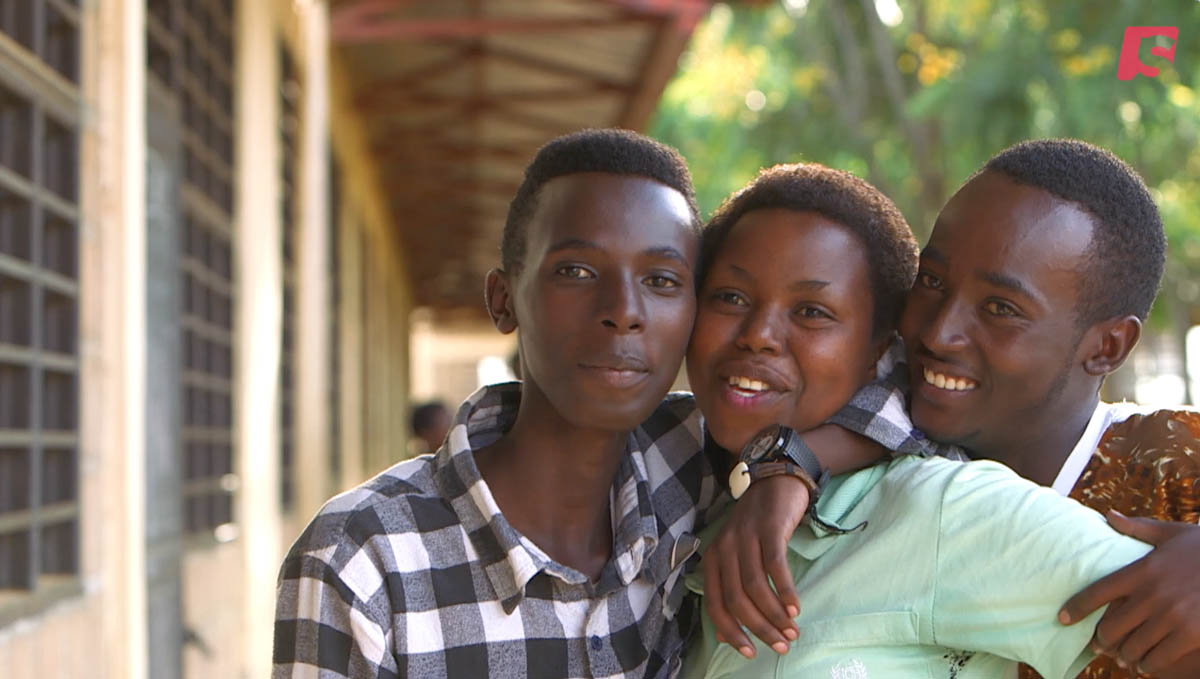
In Rwanda, they have long been rejected. The children born from rape during the 1994 genocide.
They are no less than twenty thousand. Today, in their twenties, they learn to live with this dreadful heritage. Spicee met with Dyvine, Hillary, Arthur, Emmerance… They just became adults and still have questions regarding their origin. Only now, do they have the strength to talk about their stories, and this painful feeling of illegitimacy they face in the Rwandan society. These children called "Painful memories", are nonetheless the symbol of a great promise: the reconciliation between Hutus and Tutsis. What if they were the future of Rwanda?
Directed by Marine Courtade et Christophe Busché.
Produced by Spicee
Duration: 40 min
Crédit photo : ©DR
Watani : my Homeland

Watani: My Homeland follows on the critically acclaimed Children on the Frontline
This unique film follows a Syrian family over three years as they are forced to leave behind their lives in Aleppo and embark on life as refugees, resettling in Germany.
UK/Germany, 2016
Crédit : ©DR
Le Choix d'Oleg
[fusion_builder_container hundred_percent="yes" overflow="visible"][fusion_builder_row][fusion_builder_column type="1_1" background_position="left top" background_color="" border_size="" border_color="" border_style="solid" spacing="yes" background_image="" background_repeat="no-repeat" padding="" margin_top="0px" margin_bottom="0px" class="" id="" animation_type="" animation_speed="0.3" animation_direction="left" hide_on_mobile="no" center_content="no" min_height="none"][fusion_text]
Screening takes place at la Halle aux Grains - 66, rue Saint-Jean

In the summer of 2014, thousands of young Russians surged East Ukraine, in the region of Donbass to bear arms, galvanized by propaganda and convinced to be fulfilling their patriotic duties.
Among them, Oleg, promoted to battalion commander and Max, soldier. Their story takes a sad turn on the night of June 3rd 2015 when Oleg leads his men to their death. The fight will wipe out most of the battalion, leaving the survivors to deal with the consequences of their decision to fight.
Documentary by Elena Volochine and James Keogh
Produced by Little Big story
Duration: 74 min
Crédit : ©DR[/fusion_text][fusion_separator style_type="none" top_margin="" bottom_margin="" sep_color="" border_size="" icon="" icon_circle="" icon_circle_color="" width="" alignment="" class="" id=""/][fusion_text]
« Le Choix d'Oleg »
TRAILER
[su_video url="http://www.prixbayeux.org/wp-content/uploads/2016/07/PBC2016-TEASER_LE-CHOIX-D-OLEG-DEF-VF.mov" poster="http://www.prixbayeux.org/wp-content/uploads/2016/07/lechoixdoleg-poster.png" width="1200" height="600"][/fusion_text][/fusion_builder_column][/fusion_builder_row][/fusion_builder_container]
Preview screening : "Jim: the James Foley story"
Preview screening
Thursday October 6th
On Thanksgiving Day 2012, American photojournalist James “Jim” Foley was kidnapped in Syria, two years before the infamous video of his public execution introduced much of the world to ISIS.
JIM: THE JAMES FOLEY STORY, directed by close childhood friend Brian Oakes, tells the story of Jim’s life through intimate interviews with his family, friends and fellow journalists – while former hostages reveal never-before-heard details of his captivity with a chilling intimacy that reveals their courageous untold story of perseverance.
Made with unparalleled access (including footage Foley shot himself), and using carefully rendered recreations, Oakes takes viewers deep into the darkness and valor of Jim’s captivity. What emerges is a powerful chronicle of bravery, compassion and pain at the dawn of America’s war with ISIS.
The documentary will be followed by an exchange animated by Claude Guibal with Nicole Tung and Didier François.
Doors open at 8 pm
Free Admission
Pavillon Prix Bayeux-Calvados
Place Gauquelin-Despallières
The Boat People of the Deep Blue Sea
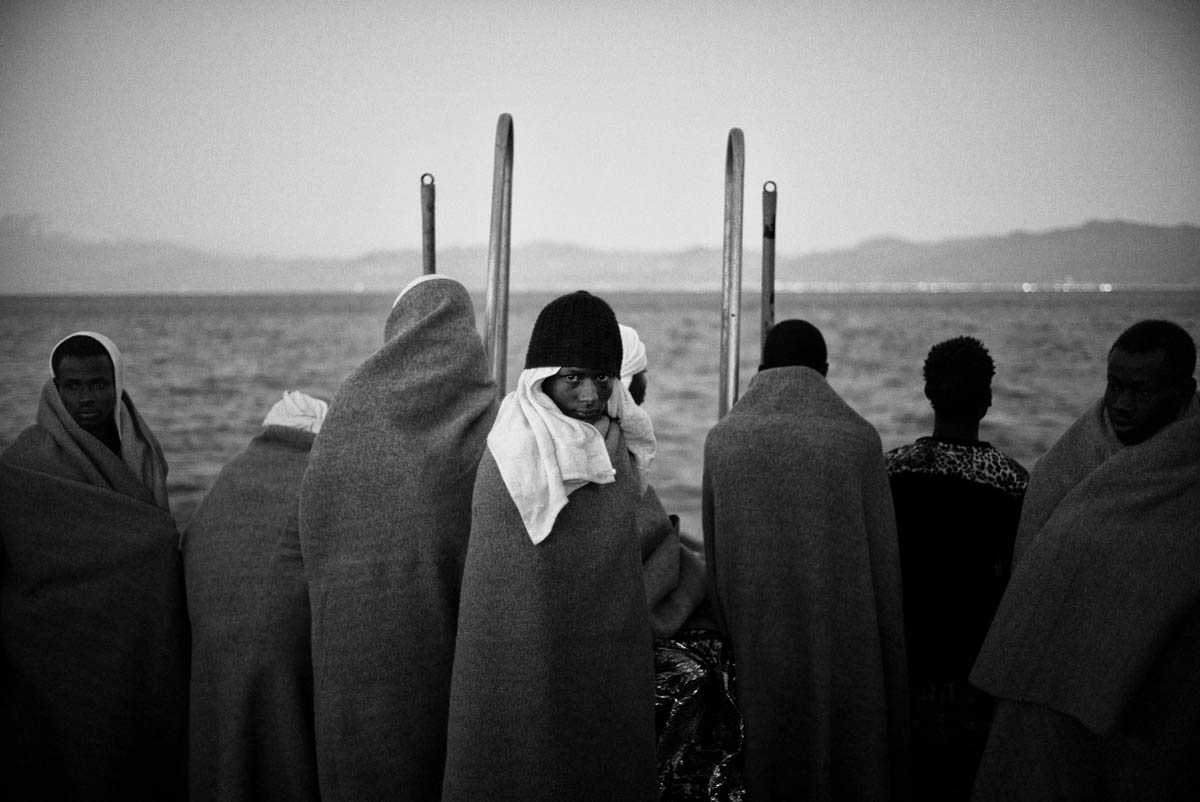
Since February 25th, a characteristic vessel cruises off the coast of Libya: the Aquarius, a civil lifeboat.
Across its flank, bold black letters are visible from afar: SOS Méditerrannée. This is the name of the NGO who sent it. A young European NGO created in May 2015 by the Captain of the German Merchant Navy, with a sole objective: to save lives. His characteristic: his total independence from a government and the European Union.
The refugees rescued by the Aquarius are known as boat people. They fled their country, south of the Sahara, in order to flee wars or poverty. Today, as they embark on inflatable dinghy made in China, barely able to float in a swimming pool, they are focused on one thing only: saving their life.
In Libya, being black is a nightmare: death is everywhere, so are kidnappings, extortions and incarcerations in revolting living conditions. Rape, hunger, fear and shootouts are also common practices.
By rescuing the boat people, listening and taking their picture, we bear witness to their ordeal and give them a voice to be heard beyond the walls that Europe is building.
Espace d’art actuel Le Radar
24, rue des cuisiniers
Open Tuesday through Sunday 2.30 pm to 6.30 pm and Saturday 2 pm to 7 pm.
Exceptionally open Monday October 3rd 2.30 pm to 6.30pm, Friday October 7th 2.30 pm to 7 pm and Saturday October 8th 10 am to 7 pm.
Free Admission
Crédit : ©Édouard Élias
The jury deliberates
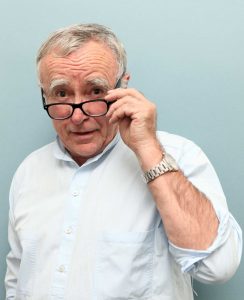
In 2016, the jury will be chaired by Jean-Claude Guillebaud, leading figure in modern journalism.
Born in 1944, Jean-Claude Guillebaud is a journalist, a writer and a publisher. He has worked for the newspapers Sud Ouest, Le Monde and Le Nouvel Observateur as a war correspondent from 1968 to 1994.
Crédit Photo : DR
New : The Video Image Award
Members of the jury will grant this award among the reports from the Television and Grand Format Television categories. With this award, the Bayeux-Calvados Award for war correspondents aims to reward the work of cameramen (and women) for the image quality of media reports all the while knowing that they are often unknown by the general public.
This new award was created thanks to Galaxie, France 24 and Arte.







